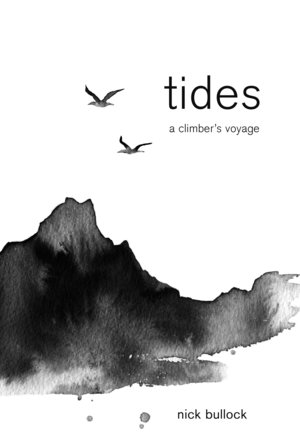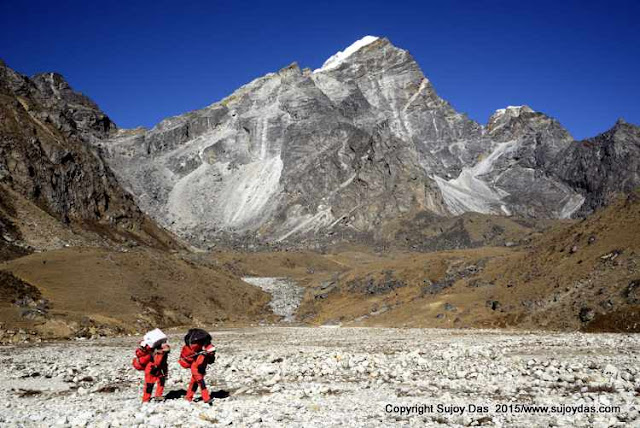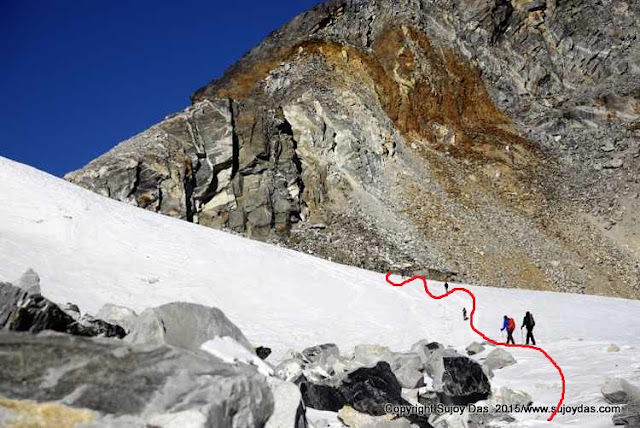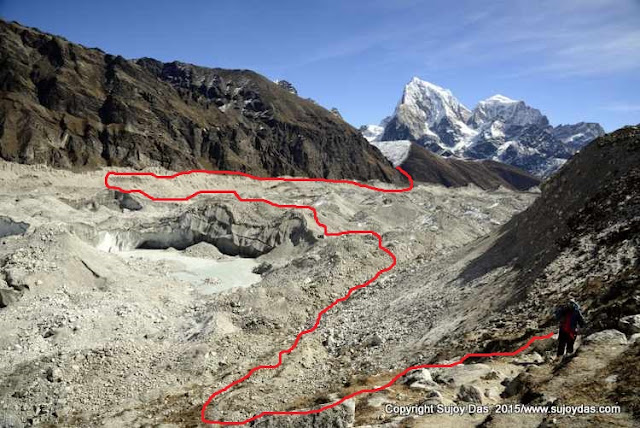
The
Banff Mountain Book competition is one of the most prestigious events for mountain books around the world. The winners of the 2018 competition have just been announced. Here is the winners list courtesy
https://www.banffcentre.ca/2018-banff-mountain-book-competition-awards
Adventure Travel
$2000 - Sponsored by Fjällräven
Lands of Lost Borders: Out of Bounds on the Silk Road
Kate Harris, Penguin Random House Canada (Canada, 2018)
"In thoughtful, melodic prose, Kate Harris embraces the spirit of adventure in this story about cycling the Silk Road even as she confronts the entangled nature of science and imperialism in the history of exploration. From permits and packaged noodles to sage-speckled horizons, Lands of Lost Borders relates the ordinary, unglamorous details of life on the road alongside moments of beauty and insight. In her travels with Mel, a childhood friend turned cycling companion, Harris also reveals how the shifting contours of a friendship can form new landscapes worth exploring. All the while, Harris maintains a hope in the power of the exchange of ideas to reimagine borders along territories and, perhaps, within the human heart."
- Paula Wright, 2018 Book Competition Jury
Mountain Fiction & Poetry
$2000 - Sponsored by Grimms Fine Foods
The Eight Mountains
Paolo Cognetti, Penguin Random House - Vintage UK, 2018)
"A coming-of-age tale set in the foothills of Monte Rosa, The Eight Mountains is the story of a friendship that forms in the mountains between Bruno, a young shepherd, and Pietro, a boy from Milan. Bruno teaches Pietro how to interpret signs in his alpine world, sweeping the reader up in an exquisite tour of the forests and glaciers. At the same time, the novel shows the cost that forsaking modernity for the mountains may exert, on individuals and their relationships. Sparse in detail but resonating with poetic energy, Paolo Cognetti’s prose glimmers like the surface of a mountain, where even the smallest ripples and fissures may reveal enormous depths. Cognetti reminds us, 'that in certain lives there are mountains to which we may never return.'"
- Paula Wright, 2018 Book Competition Jury
Mountain Literature (Non Fiction) The Jon Whyte Award
$2000 - Sponsored by The Whyte Museum of the Canadian Rockies
Tides: a climber's voyage
Nick Bullock, Vertebrate Publishing (UK, 2018)
"In Tides Nick Bullock carries us with him on the sought-after dream life of a pro climber, seasonally migrating from Llanberis to Chamonix, and other hotspots along the way. Young want-to-be-sponsored climbing bums beware, all is not glory on this path, for as well as the slippery sea-cliff holds, long runouts and Himalayan storms lie other perils: self-questioning, angst at ageing, failed relationships, and a search for meaning. Evocative stories which have become campground lore, Nick offers a glimpse into his mind in the life to which he has committed."
- Ian Welsted, 2018 Book Competition Jury
Mountain Environment and Natural History
$2000 - Sponsored by Town of Banff
The Wolf: A True Story of Survival and Obsession in the West
Nate Blakeslee, Penguin Random House Canada (Canada, 2017)
"Cinematic and movingly told, Nate Blakeslee’s The Wolf is the true story of O-Six, an adept hunter and the alpha female of her pack, narrated against the backdrop of the political and environmental history of the American West. Rendered in novelistic detail from the meticulous reports of Yellowstone park employees, O-Six struggles to protect her pack from encroaching wolves as other dangers - in the form of hunters and changing policy - loom. Skillfully crafted in sparse, elegant prose, The Wolf is at its core the bare story wolves and men, a tale older than the mythic American West itself."
- Paula Wright, 2018 Book Competition Jury
Mountain Image
$2000 - Sponsored by Lake O'Hara Lodge
The Canadian Rockies: Rediscovered
Paul Zizka, Rocky Mountain Books (Canada, 2017)
"Paul Zizka has produced an absolutely breathtaking collection of images of the Canadian Rockies. People from the world over visit the Rockies to take in these views; Zizka captures them at their most magnificent. Initially recognized for his aurora night photos this collection revisits the area with new themes. The result is a visual masterpiece."
- Ian Welsted, 2018 Book Competition Jury
Guidebook
$2000 - Sponsored by the Association of Canadian Mountain Guides
Squamish Rockclimbs
Kevin McLane and Andrew Boyd, High Col Press (Canada, 2018)
"As Canada's preeminent world-class climbing locale Squamish deserves the exact, loving treatment that Kevin McLane and Andrew Boyd gives it in their guidebook, Squamish Rockclimbs. Eschewing commercial pressures for brevity and select guidebooks, we are fortunate that McLane and Boyd continue to produce this comprehensive guide to all the known climbs. Enhanced by essays chronicling the local climbing history and ethic, the volume is the reference of record and an essential tool alike."
- Ian Welsted, 2018 Book Competition Jury
Mountaineering Article
$2000 - Sponsored by the University of Alberta and the Alpine Club of Canada
Contraindications
Alison Criscitiello, Alpinist Magazine (USA, August 2017)
“A heartbreaking story beautifully told. It would be almost impossible to imagine what it must have been like to experience this tragedy except that Alison has opened her heart and shared her experience so deeply. The story honours Anna and their time together and is, I feel, a deeply important read for anyone who travels in the mountains and values love, life and friendship.”
- Larry Stanier, 2018 Book Competition Jury
*Jury member Paula Wright (Associate Editor of Alpinist Magazine) recused herself from adjudication of this category.
Mountaineering History
$2000 - Sponsored by Rab
Honouring High Places: The Mountain Life of Junko Tabei
Junko Tabei and Helen Rolfe, Rocky Mountain Books (Canada, 2017)
“The story of a young woman who begins climbing in Japanese Mountain Club culture in the 1960’s is a tale worth reading in itself. From this complex and often tragic social beginning Junko Tabei goes on to a rich life that manages to include family, teaching and climbing all over the world well into her late 70’s while supporting causes related to the value of a life connected to nature and the mountains. It is a well named and well put together piece of history.”
- Larry Stanier, 2018 Book Competition Jury
Special Jury Mention
Bert Riggall's Greater Waterton: A Conservation Legacy
Beth Russell-Towe, Fifth House Publishers (Canada, 2018)
“Bert Riggall’s photographs from the first half of the 20th Century frame some fabulous writing about the people, terrain and history of the Greater Waterton Region. The images alone tell a fabulous story. Sid Marty’s Mistakis-The Backbone of the Earth and Kevin van Tighem’s God’s Breath should be required reading for anyone who travels to southwest Alberta. This is a story of the origins of a regional conservation legacy that to this day strives to include the landscape, flora, fauna and people who live in this very special part of the world.”
- Larry Stanier, 2018 Book Competition Jury
Special Jury Mention
Atlas of a Lost World
Craig Childs, Pantheon Books (USA, 2018)
"With the aid of archaeological findings and anthropological research, Craig Childs travels from the present to the prehistoric past to meet the inhabitants of the Ice Age. Across the Harding Ice Field, Paleolithic burial sites, and more, Childs illuminates the fragile humanity within the seemingly mythical past. At the same time, Childs issues a warning for a warming planet as he reminds us, 'Going ahead without stories or family is like falling off the edge of the earth.'"
- Paula Wright, 2018 Book Competition Jury
For more information on the event and the Banff Festival November 2018 do visit
https://www.banffcentre.ca/




































